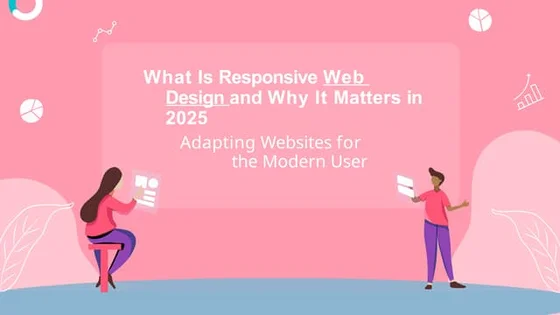
Why Responsive Web Design Still Matters in 2025
As digital devices continue to diversify, responsive web design remains a non-negotiable standard. From foldable smartphones to ultra-wide monitors and smart TVs, users interact with websites in more ways than ever. In 2025, delivering a seamless, consistent experience across all screen sizes isn’t just good design—it’s smart business.
What is Responsive Web Design?
Responsive design is the practice of building websites that automatically adjust layout, images, and functionality based on the device’s screen size and orientation. It ensures that users have a smooth experience whether they’re browsing on a 5.5-inch phone or a 32-inch monitor. Learn how we implement responsive web design services at Grivista.
1. Mobile-First Is Still the Priority
In 2025, mobile accounts for over 60% of all global web traffic. A mobile-first approach—designing for the smallest screens first—ensures faster loading times, streamlined interfaces, and an intuitive experience. This strategy helps websites score better in Google’s Mobile-Friendly Test.
2. Better SEO Through Responsive Design
Google continues to reward mobile-optimized and responsive websites with better search visibility. Responsive layouts reduce bounce rates, increase dwell time, and enhance your Core Web Vitals—all of which contribute to improved SEO rankings.
3. Improved User Experience (UX)
Whether users are reading your blog, browsing your portfolio, or contacting you via a form, they expect clarity and consistency. Responsive designs avoid pinch-to-zoom frustration, horizontal scrolling, and overlapping content. Visit our portfolio to see how we prioritize UX in every project.
4. Cost-Effective and Easier to Maintain
Instead of managing separate mobile and desktop websites, a single responsive site is easier to maintain, scale, and update. It saves time for your development team and ensures consistent branding across devices and platforms.
5. Adaptable to Future Technologies
The internet is evolving—fast. With devices like AR glasses, foldables, and voice interfaces becoming common, responsive design principles ensure your website can adapt without a total overhaul. This is part of our future-proof design philosophy.
6. Boosting Conversion Rates
Good design isn’t just about looks—it drives action. Responsive sites reduce friction in navigation and CTAs, leading to better form submissions, product views, and purchases. Whether your CTA is “Get a Quote” or “Book a Demo,” users are more likely to convert when the experience is smooth.
7. Supports Accessibility Goals
Responsive design plays a vital role in accessibility. Screen readers, font resizing, and keyboard navigation all rely on flexible layouts and proper markup. Learn more in our upcoming post on Web Accessibility Best Practices.
Final Thoughts
Responsive web design is far from a trend—it’s a foundational strategy for digital success. As devices continue to evolve and user expectations rise, your website must deliver speed, usability, and elegance across all platforms. At Grivista, we design and develop responsive websites that are performance-driven, SEO-optimized, and beautifully intuitive.
Want to make your website responsive and future-ready? Get in touch with our expert design team today.








